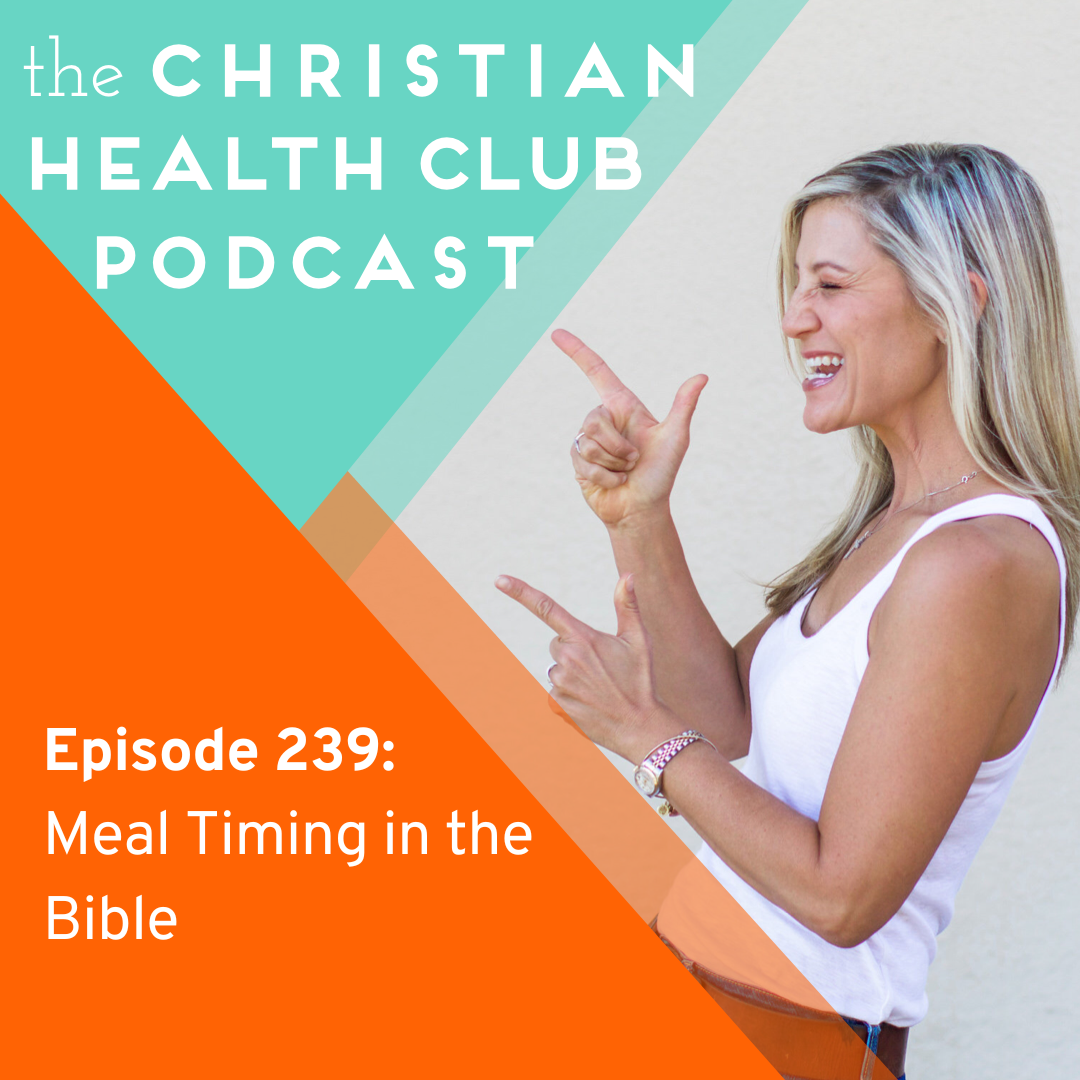239: Meal Timing in the Bible
Ever wonder about meal timing in the Bible?
How many meals did they eat a day?
What was the primary meal of the day?
How did they time their fasts?
In this week’s episode, we’re exploring these answers and what takeaways might be relevant to the way we time our meals and fasts today.
📩 Get on my Sunday Sendout List to receive all of my best tips and information!
📲 Check out my website for access to recipes, The Christian Health Club Podcast, free guides, and more!
239: Meal Timing in the Bible
EPISODE BLOG
Hello, my friend, and welcome back to the Club! How are you today? We've been on a roll discussing the topics of fasting and meal timing, and this week, I thought it would be fascinating to delve into the meal timing practices in the Bible and during Biblical times. This information isn't readily available by simply reading the Bible, so I've gathered insights from sources like the International Standard Bible Encyclopedia and other commentaries to bring you a comprehensive overview of meal timing in ancient times. Join me on this journey as we uncover how people in the Bible era structured their meals and what we can learn from their practices.
The Breakfast on the Shore
We begin our exploration by looking at a specific incident in the Bible where Jesus cooked breakfast for His disciples on the banks of the Sea of Tiberias. In the Gospel of John (John 21:4-14), we read how Jesus appeared early in the morning, prepared fish and bread, and invited His disciples to have breakfast. The image of Peter jumping off the boat in excitement to reach Jesus is reminiscent of scenes from movies like Forrest Gump.
From this account, we learn that Jesus made fish and bread for breakfast, and it was indeed in the morning when He invited the disciples to join Him. This sets the stage for our investigation into the meal timing practices of Biblical times.
Two Meals a Day: A Common Practice
Our research leads us to the understanding that it was customary among the ancient Hebrews and their contemporaries to consume two main meals a day. The first meal typically occurred between mid-morning and noon. While some references suggest the existence of a small "morning morsel," a substantial early breakfast was generally frowned upon. Ecclesiastes 10:16 even alludes to the reproach associated with indulging in a heavy early breakfast.
One passage that illustrates the timing of the first meal is found in the book of Ruth (Ruth 2:14), where Boaz invites Ruth to eat during mealtime, which occurred after their morning work.
Another reference from Acts (Acts 10:9-10) describes Peter becoming hungry and wanting something to eat around noon, indicating that the first meal of the day was often delayed until after morning tasks were completed.
The Art of Fasting and Skipping Breakfast
Fasting in Biblical times often involved skipping the first meal of the day and waiting until dinner to eat. This practice is reflected in 1 Samuel 14:24 when Saul ordered his troops not to eat until the evening to focus on avenging themselves against their enemies. This decision led to hunger and fatigue among the troops, as illustrated by Jonathan's experience with honey in the woods.
Interestingly, ancient armies like the Greeks and Romans adopted a one-meal-a-day approach to gain an advantage over enemies by minimizing meal breaks and maintaining their fighting readiness.
Historical Perspectives on Meal Timing
To gain further insights, we turn to historical accounts. The Greeks and Romans, during their zenith period, adhered to a one-meal-a-day regimen. The Romans typically broke their fast with a small meal, while their main meal occurred in the evening. However, the downfall of Rome was partly attributed to excessive indulgence in food, which came with power and wealth.
The transition from two meals a day to three in England occurred during the reign of Queen Elizabeth, aligning with increasing prosperity. The adoption of three meals was influenced by economic factors more than nutritional needs.
Benefits of Daytime Fasting
We also explore the potential benefits of fasting during the day between the first and last meal. Some studies suggest that dawn-to-sunset fasting can have anti-inflammatory effects, reduce oxidative stress, and improve components of metabolic syndrome. This approach aligns with circadian rhythms and allows for two extended fasting periods within a 24-hour day.
The King-Prince-Pauper Diet
While two meals a day was common in Biblical times, we acknowledge that modern lifestyles are significantly different. The King-Prince-Pauper diet, which involves eating the largest meal in the morning, a moderate meal at noon, and a smaller meal in the evening, may be more suitable for contemporary living.
Conclusion
In conclusion, exploring meal timing in the Bible and ancient practices provides valuable insights into how our ancestors structured their eating habits. While their two-meal-a-day approach may not directly apply to our modern lives, it offers perspectives that can guide our decisions about fasting and meal timing. Remember that discernment is key, and we should adapt these practices to our individual needs and circumstances.
As we navigate the complexities of meal timing, let's also remember that amidst the changing dietary recommendations and nutritional trends, our unchanging God remains our source of guidance and wisdom. In Malachi 3:6, He declares, "I am the LORD, and I do not change." We can always seek His direction as we make choices about when and how we nourish our bodies.
I hope you found today's exploration as fascinating as I did, and I encourage you to reflect on these insights as you make decisions about your meal times and fasting practices. Thank you for joining me on this journey, and I wish you a healthy and blessed week ahead.
Resources and Programs
https://www.internationalstandardbible.com/M/meals-meal-time.html
https://womeninthebible.net/bible_daily_life/cooking_ancient/
"The Hygienic System: Orthotrophy”, by Herbert M. Shelton
Join the Sunday Sendout List
Join the The Christian Health Club
Join the The School of Christian Health and Nutrition Waitlist
Thanks for listening! Have a healthy and blessed week!

